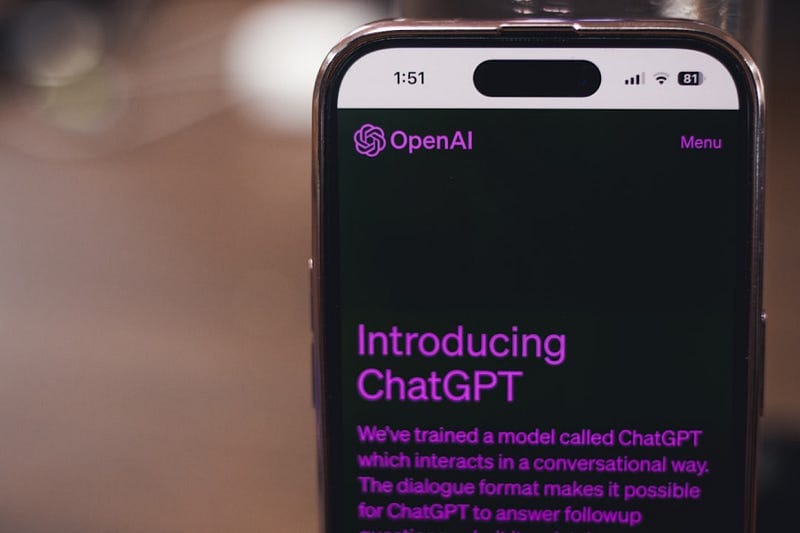Mastering Prompt Engineering: How to Get the Best from LLMs
Photo by Sanket Mishra on Unsplash

Large Language Models (LLMs) like GPT-4, Claude, and Gemini are powerful tools for generating text, answering questions, writing code, and much more. However, their effectiveness heavily depends on how you structure your prompts.
Prompt engineering is the art of designing inputs that guide LLMs to generate accurate, relevant, and high-quality responses. In this guide, we’ll explore advanced prompt techniques, real-world examples, and best practices to help you get the best results from LLMs.
1. Understanding How LLMs Work
Before diving into advanced techniques, it’s important to understand that LLMs:
✅ Predict the most probable next word based on patterns in training data.
✅ Do not “think” like humans – they rely on statistical models.
✅ Perform better with clear, structured, and well-defined prompts.
🔹 Example: Poor vs. Effective Prompt
❌ Vague Prompt:
“Tell me about Python.”
✅ Clear Prompt:
“Give me a 5-point summary of Python programming, including its key features and best use cases.”
2. The Key Components of a Good Prompt
A well-crafted prompt often includes:
• Role/Persona: Define who the model should act as.
• Task/Instruction: Clearly state what you need.
• Context: Provide relevant background information.
• Constraints: Specify word limits, formats, or styles.
🔹 Example: Well-Structured Prompt
“You are a Python expert. Explain list comprehensions in Python in a concise manner with one example.”
3. Using Few-Shot and Zero-Shot prompting
LLMs can be zero-shot (no examples) or few-shot (some examples). Providing examples improves accuracy.
🔹 Example: Zero-Shot vs. Few-Shot Prompting
❌ Zero-Shot Prompt:
“Convert the text into passive voice: ‘The cat chased the mouse.’”
✅ Few-Shot Prompt (With Examples):
*“Convert the following active sentences into passive voice:
1. ‘She wrote a book.’ → ‘A book was written by her.’
2. ‘The cat chased the mouse.’ →”*
💡 Why? Few-shot learning gives the model a pattern to follow, leading to more consistent results.
4. Chain-of-Thought (CoT) Prompting
LLMs reason better when guided through step-by-step thinking.
🔹 Example: Simple vs. CoT Prompt
❌ Basic Prompt:
“What is 135 multiplied by 12?”
✅ CoT Prompt:
“Solve 135 × 12 step by step. First, break it down using multiplication rules, then compute the final answer.”
💡 Why? When forced to explain, LLMs reduce hallucinations and provide more accurate results.
5. Using Role-Based Prompting
Setting a role improves response quality.
🔹 Example: Role-Based Prompt
“You are a senior software architect. Explain the advantages of microservices over monolithic architecture for a non-technical audience.”
💡 Why? The LLM adjusts its tone, complexity, and examples based on the role.
6. Utilizing Formatting for Better Outputs
Use markdown, tables, or bullet points for structured responses.
🔹 Example: Better Formatting in Prompts
“Summarize the book ‘Atomic Habits’ in a table with two columns: Key Concepts and Takeaways.”
✅ LLMs generate clear tables instead of a plain-text paragraph.
7. Controlling Response Length & Style
Specify the desired tone, style, or word limit for better control.
🔹 Example: Controlling Length & Style
“Explain recursion in 2 sentences with an example in Python.”
🎯 Why? Without constraints, the model may generate unnecessarily long answers.
8. Multi-Turn Conversations: Maintaining Context
LLMs don’t retain memory across sessions, so for multi-turn queries:
✅ Reference past responses in follow-ups
✅ Restate key details if needed
🔹 Example: Maintaining Context in Multi-Turn Prompts
1️⃣ User: “Explain object-oriented programming in simple terms.”
2️⃣ LLM: “OOP is a programming paradigm using objects that encapsulate data and behavior.”
3️⃣ User (Good Follow-Up): “Can you give an example in Python?”
4️⃣ User (Bad Follow-Up): “What about Python?” (Too vague!)
9. Iterative Refinement: Improving Responses
LLMs sometimes need multiple attempts. You can:
✅ Ask for revised versions
✅ Add clarifications
🔹 Example: Refining a Prompt
❌ First Attempt:
“Explain blockchain.”
✅ Refined Prompt:
“Explain blockchain technology in simple terms, using an analogy a 10-year-old can understand.”
10. Automating Prompt Engineering (Advanced Users)
For developers, automating prompts using APIs can improve consistency.
✅ Dynamic Prompting Example in Python:
import openai
prompt = "Summarize the key benefits of GraphQL in 5 bullet points."
response = openai.ChatCompletion.create(
model="gpt-4",
messages=[{"role": "user", "content": prompt}]
)
print(response['choices'][0]['message']['content'])Why? Automating prompts ensures standardized responses in applications.
Final Thoughts: Master Prompt Engineering Like a Pro!
Mastering prompt engineering lets you:
🚀 Get faster, more accurate responses
📊 Improve clarity and structure
🤖 Reduce hallucinations and irrelevant outputs
🔹 Key Takeaways:
✅ Use structured prompts (Role, Task, Context, Constraints)
✅ Utilize few-shot & chain-of-thought prompting
✅ Control output format, length, and style
✅ Iterate, refine, and automate prompts
With these prompting techniques, you can unlock the full potential of LLMs for coding, writing, data analysis, and beyond! 💡




